News & Articles
Browse all content by date.
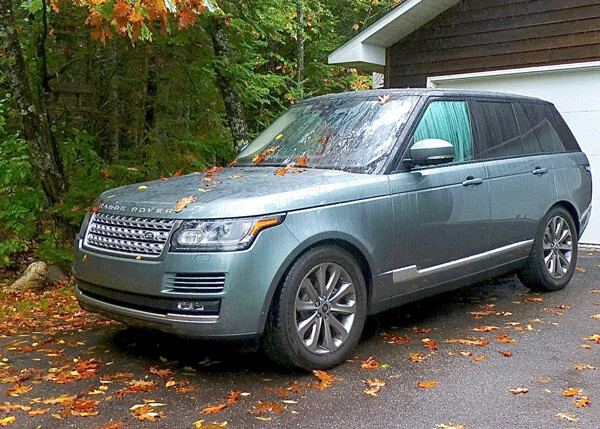
My standard assessment of Land Rover vehicles is that they would be the SUV of choice if you wanted to drive from wherever you are to Hudson Bay, without using any roads.
I recently had the opportunity to drive a new 2017 Land Rover Range Rover HSE Td6 for a week, including a highway trip from Duluth, Minnesota, to Chicago. My previous and aging assessment still stands. Maybe moreso.
Some Land Rovers are Land Rovers, and others are Range Rovers, which usually designate the higher-end models. The one I drove was the latest iteration of the standard “Land Rover Range Rover” and it broke new ground by being powred by a 3.0-liter V6 Turbodiesel engine, with a strong 254 horsepower, and an overwhelming 443 foot-pounds of torque, all harnessed through an 8-speed automatic transmission.
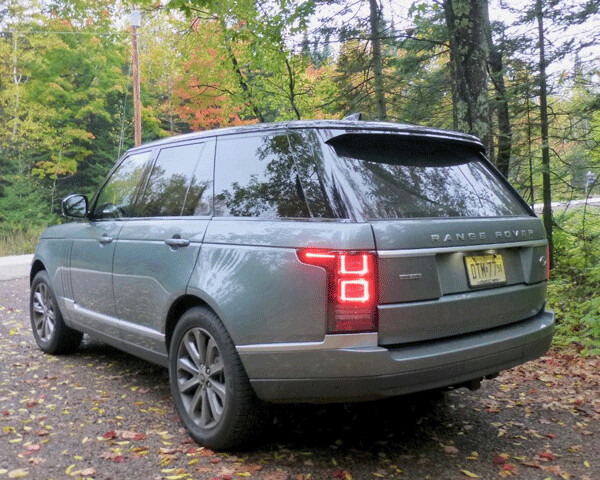
Diversifying its model range means you can now start with the Land Rover Discovery starting at around $50,000; the Discovery Sport, starting at $40,000; the Land Rover Range Rover -- ranging from $87,000 to $201,000 to the stylish Land Rover Range Rover Evoque, starting at $43,000; up to the Land Rover Range Rover Sport, starting at $67,000; and the new Land Rover Range Rover Velar, starting at $50,000.
Locating a dealership might be a challenge, but appreciating any of that intriguing array is assured., I want to drive all of them, and never mind that I have no idea how they differentiate between a Range Rover and a Land Rover. The topic for the day will do, particularly now that I my Land Rover Range Rover can run from $87,000 to over $200,000. The sticker price in the test vehicle showed a total price of $95,645, and it was so well-equipped that I can’t imagine what all might be added to double its sticker.
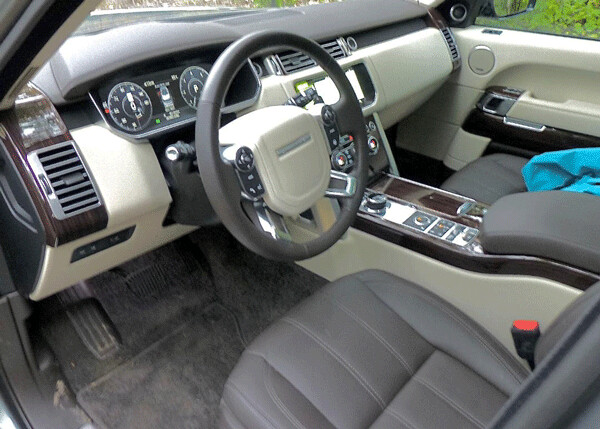
In this specific model, you can choose from a 3.0-liter gas V6 in two forms, both supercharged, or the 3.0 Turbodiesel, or the top-line 5.0-liter V8, supercharged to 550 horsepower and 502 foot-pounds of torque.
The 3.0 Turbodiesel was quiet, almost unnervingly quiet, and when you told anyone that it was a diesel, they listened closely and doubted you. The comparative silence is a good thing, recalling the loud, smoky, clattering diesels of past years.
But this one was equally impressive on the freeway, or scaling the steep avenues of Duluth, which is one of the stiffest road-test disciplines imaginable. When you head up Lake Avenue, knowing you need to climb eight blocks of about 20-degree grade, you instinctively step on the accelerator. In the new Range Rover Turbodiesel, such a move allows you to imagine what space travel might be like at launch-time. The vehicle nearly flies up the steep hills with a strong surge of power and no hesitation. That’s what 443 foot-pounds of torque will do for even a hefty, 2-ton-plus SUV.
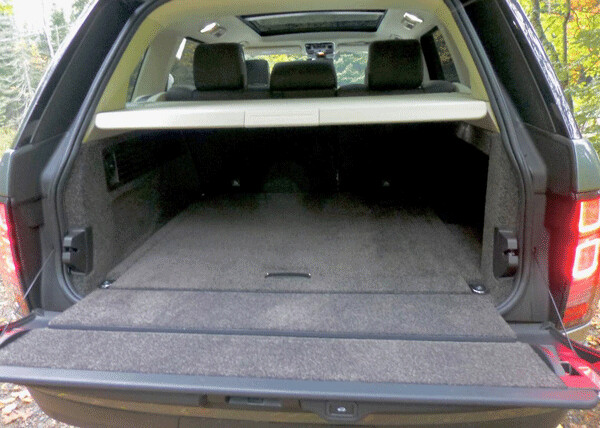
If you want to tow something, that power works for what is measured at 7,716 pounds of towing weight. Naturally, it also equates well to freeway cruising. Setting the cruise control at 70 allowed us to watch the computer climb steadily until we overshot the 22-28 EPA estimates and reached 29.5 miles per gallon.
As you drive along any highway or urban street, you take notice of all sorts of other vehicles sharing the roadways. A sports car, an exotic sports car, a sporty sedan, a high-end luxury sedan, a sporty or enormous SUV - all might elilcit different impressions, and perhaps the biggest negative is if nobody takes any notice of your vehicle.
A Land Rover, meanwhile, holds a special place in the stature of notable vehicles, and much of its image stems from being decidedly unchanged over the years. Now, certainly Land Rovers have changed considerably, establishing standards for uncompromising class and luxury, but they have continued to carve a strong and bold image.
Land Rovers are both intriguing and puzzling. An old English company, Land Rover built its reputation on engineering excellence, which made it interesting in decades past, when its over-built structures were fitted with various engines from other companies, rarely living up to the stature of their rugged body and frames.
When the British car-making companies fell on hard times, their pride kept Jaguar and Land Rover going, and for a time they were owned by Ford. Since being cut adrift, they were jointly bought by Tata Motors of India, which raised all sorts of eyebrows because people wondered about the situation. But India, with its enormous population, has followed right behind China as rising to the top of the car market, and Tata Motors has allowed Jaguar and Land Rover to make stirring comebacks in the industry.
Both are still built in the United Kingdom, with Jaguar coming up with several new designed sports cars, sedans and crossover SUVs from its Coventry, England, home, while also building some new and impressive engines. Land Rover has an assembly plant in Solihull, U.K., and by its arrangement with Jaguar, Land Rover uses several Jaguar engines.
Presumably the sharing works both ways, and when Jaguar started building a crossover SUV, who better to come to for advice than Land Rover?
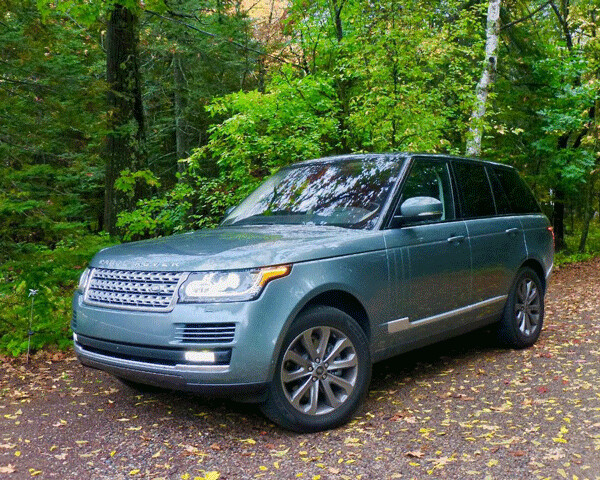
When I first tried out any Range Rover, I was astounded by the sturdy girders that passed as frame rails. Heavy, yes, but impervious to any damage or shock damage from the most strenuous off-road driving. Hence my assessment of heading for Hudson Bay without roads.
Also, the gang at Land Rover is absolutely the best at laying out off-road facilities that test every capability of the vehicles. With a 2-speed electronic transfer case, the test vehicle had terrain response with switchable alterations for general, snow, mud, or sand.
I’ve driven Range Rovers through some of those courses, which are located in various parts of the world, and one of my most exciting ventures was when I was invited to test a new model on a climb up to and along the Continental Divide in the Rocky Mountains. Each vehicle included two journalists and a professional Land Rover driving instructor, and at various points he would jump out, walk carefully ahead of us, then signal us to delicately complete a near-U-turn at certain switchbacks, where we had a mountainside on one side, and about a half-hour fall on the other. You are not thinking so much of high-tech stability control or roll stability control, or even the four-channel braking system, as you are of focusing your adrenaline high on survival.
After a particularly challenging part of the descent, when my co-driver said he wasn’t feeling well and requested that I continue driving. One of the highlights of my test-driving history, which is approaching 50 years, was when our trail instructor confided in me that he was very pleased and relieved when I “had to” drive the rest of the trek. You could probably check in the New Car Picks archives to find my evaluation of that trip, as well as some of the most spectacular photos I’ve ever shot, while picking our way down that mountainside.
The current test vehicle represents about a decade of improvement, which accompanies a decade-worth of secure financial backing. All of the current safety features and convenience items are incorporated into the new Range Rover. For example, there is a split rear hatch, and when you hit the switch on the keyfob the top part swings up and open. There is still a large lower sill, however, so you hit another switch, and power swings the lower part out and down.
Neat little signature ambient lighting showers a logo on the street next to your door, and along with front and rear parking aids, the vehicle also had lane departure warning and autonomous emergency braking. Nice features such as rain-sensing wipers and a huge panoramic sunroof, are complemented by such safety elements as a perimetric alarm with an engine immobilizer.
The exterior and interior share a pristine, almost sterile simplicity. Inside, real wood trim and the finest smooth leather surrounds occupants, with straight surfaces and no frills. Outside, same thing, with the paint named Scotia Grey. I like the Scotland reference, and I really like “grey” spelled that way.
Adding things like connectivity, a high-powered audio system and heads-up display, always offset by real-world things like a serious hill-descent control are measures of Range Rover upgrades. And, recalling our drive down from the top of the Rocky Mountains, trust me that the hill-descent control is for real.
| Tweet |


